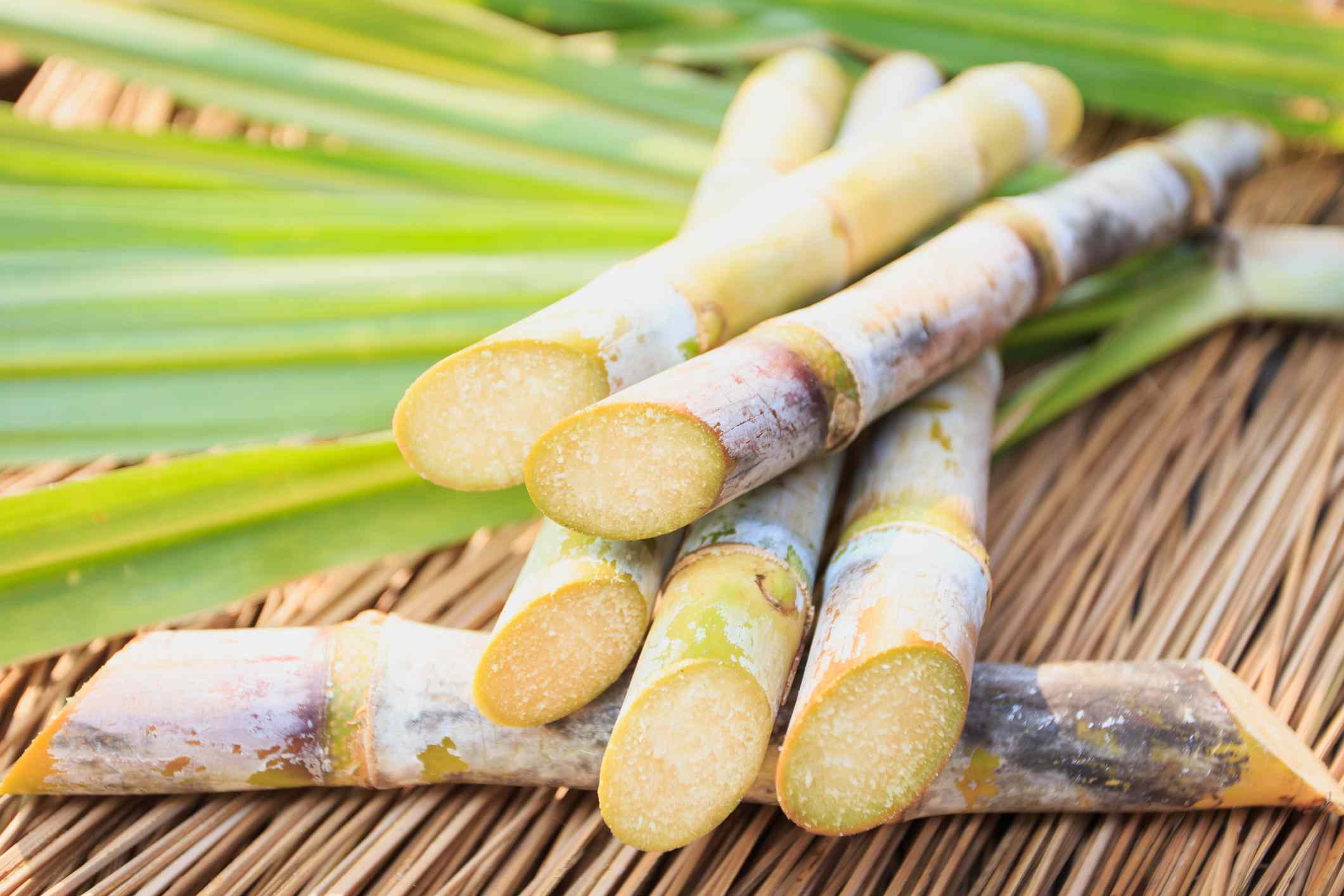
Sugar cane is a widely cultivated crop that has been used for centuries to produce sweeteners and other products. It is a tall perennial grass native to tropical regions, primarily found in countries like Brazil, India, China, and Thailand. In recent years, there has been a growing concern about the impact of excessive sugar consumption on health, making sugar cane a topic of interest for many. In this article, we will explore 20 fascinating facts about sugar cane, shedding light on its history, cultivation, uses, and nutritional value. From its ancient origins to its modern-day applications, sugar cane continues to be a significant player in the global food industry. So, let’s dive into the world of sugar cane and discover some intriguing facts that you probably didn’t know!
Key Takeaways:
- Sugar cane is a tall grass that produces sweet sucrose, used to make various types of sugar and even rum. It’s a sustainable crop with economic and environmental benefits.
- Sugar cane has a rich history, from its origins in New Guinea to its use in traditional medicine and cuisine. It’s not just a sweet treat, but a versatile and valuable resource.
Sugar cane is a perennial grass?
Sugar cane belongs to the grass family, and it is a perennial plant that can grow up to 20 feet tall. With its thick stalks and lush green leaves, sugar cane is cultivated in tropical and subtropical regions all around the world.
The origins of sugar cane can be traced back to New Guinea?
The cultivation and use of sugar cane date back thousands of years to New Guinea. From there, it spread to other parts of Southeast Asia and eventually reached India, Persia, and Europe through trade routes.
Sugar cane contains sucrose?
The main component of sugar cane is sucrose, a natural sugar that gives it its sweet taste. Sugar cane is one of the primary sources of sucrose, which is extracted to produce various types of sugar.
Sugar cane is used to produce different types of sugar?
From granulated sugar to brown sugar and molasses, sugar cane is processed in different ways to produce various types of sugar. Each type has its distinctive flavor and characteristics.
Brazil is the largest producer of sugar cane in the world?
Brazil is renowned for its vast sugar cane plantations, making it the largest producer of sugar cane globally. The country’s tropical climate and fertile soil create ideal conditions for sugar cane cultivation.
Sugar cane production requires plenty of water?
Being a thirsty crop, sugar cane requires a significant amount of water for proper growth and development. Adequate irrigation systems are essential in areas where natural rainfall is insufficient.
Sugar cane is harvested by cutting the stalks?
The harvesting of sugar cane involves cutting the mature stalks close to the ground. Once the stalks are harvested, they are transported to sugar mills for further processing.
Sugar cane can be chewed for its juice?
In some cultures, chewing on raw sugar cane stalks is a popular way to extract its sweet juice. It provides a refreshing and natural burst of flavor, similar to chewing on a juicy piece of fruit.
Bagasse, a byproduct of sugar cane, is used for various purposes?
Bagasse, the dry pulpy residue left after extracting juice from sugar cane, is a valuable byproduct. It is used as a biofuel, animal feed, and even for producing paper and other fiber-based products.
Sugar cane can help in the production of ethanol?
The high sugar content in sugar cane makes it an excellent source for producing ethanol, which is widely used as a biofuel. Ethanol derived from sugar cane is considered more environmentally friendly compared to traditional fossil fuels.
Sugar cane can enhance soil fertility?
Sugar cane cultivation can improve soil fertility due to its deep rooting system, which helps in nutrient cycling and reducing soil erosion. It is commonly used in crop rotation systems to rejuvenate the soil.
Sugar cane is used in the production of rum?
Rum, a popular distilled alcoholic beverage, is made from the fermentation and distillation of sugar cane juice or molasses. The Caribbean is known for its production of high-quality rum, with many distilleries using locally grown sugar cane.
Sugar cane has a long history of medicinal use?
In traditional medicine, sugar cane has been used for various purposes. It is believed to have beneficial effects on digestion, provide energy, and even aid in the treatment of certain ailments.
Sugar cane can be a renewable energy source?
With the rise of renewable energy sources, sugar cane has gained attention as a potential bioenergy crop. Its biomass can be converted into biofuels and used to generate electricity and heat.
Sugar cane is a key ingredient in many cuisines?
Sugar cane is widely used in culinary traditions around the world. From sweetening beverages and desserts to adding flavor to savory dishes, sugar cane adds a unique touch to various cuisines.
Blackstrap molasses is a byproduct of sugar cane processing?
Blackstrap molasses is a thick, dark syrup that is left behind after processing sugar cane. It is rich in minerals and has a distinct bittersweet flavor, making it a popular ingredient in baking and cooking.
Sugar cane cultivation requires manual labor?
Due to the nature of sugar cane harvesting and processing, it still relies heavily on manual labor in many parts of the world. Workers manually cut and transport the stalks, ensuring proper handling during the production process.
Sugar cane is used to make jaggery?
Jaggery, a traditional unrefined sugar, is commonly made from sugar cane juice. It has a caramel-like flavor and is used in various sweets and desserts in South Asian and African cuisines.
Sugar cane is a sustainable crop?
Sugar cane can be considered a sustainable crop due to its ability to absorb carbon dioxide from the atmosphere and convert it into biomass. It plays a role in carbon sequestration and can contribute to reducing greenhouse gas emissions.
Sugar cane has economic importance in many countries?
The cultivation and processing of sugar cane have significant economic importance in many countries. It creates employment opportunities, contributes to the export industry, and supports the livelihood of farmers and workers in sugar cane-producing regions.
Conclusion
As we have delved into the fascinating world of sugar cane, we have uncovered 20 intriguing facts about this versatile plant. From its origins in New Guinea to its widespread cultivation in over 90 countries today, sugar cane has played a significant role in our history and culture.
We have learned that sugar cane not only serves as a primary source of sucrose, but it also has several other valuable uses, such as in the production of biofuels and the creation of molasses and rum. Additionally, the cultivation of sugar cane has positive environmental impacts, as it helps reduce soil erosion and promotes the absorption of carbon dioxide.
Moreover, we have explored the diverse nutritional aspects of sugar cane, including its high fiber content and various vitamins and minerals. However, it is important to consume sugar cane and its derivatives in moderation, as excessive intake can have adverse effects on our health.
In conclusion, sugar cane is much more than just a sweetener. Its rich history, multiple purposes, and nutritional benefits make it an intriguing agricultural crop worth exploring and appreciating.
FAQs
Q: Where does sugar cane originate from?
A: Sugar cane originates from New Guinea and has since been cultivated in many regions worldwide.
Q: How is sugar cane harvested?
A: Sugar cane is typically harvested by cutting the stalks close to the ground using specialized machinery. It is then transported to processing facilities to extract the juice.
Q: What are the main uses of sugar cane?
A: Sugar cane is primarily used for the production of sugar and its derivatives, but it is also used in the creation of molasses, rum, biofuels, and even as a natural sweetener in various foods and beverages.
Q: Is sugar cane environmentally friendly?
A: Yes, sugar cane cultivation has several environmental benefits. It helps reduce soil erosion, promotes the absorption of carbon dioxide, and can even be used to produce biofuels as a renewable energy source.
Q: What are the nutritional benefits of sugar cane?
A: Sugar cane is a good source of dietary fiber and contains essential vitamins and minerals, including iron, calcium, and vitamin C. However, it is important to consume sugar cane in moderation, as excess sugar intake can lead to health problems.
Satisfying your sweet tooth with sugar cane is just the beginning! Expand your knowledge by exploring cane sugar nutrition facts, which reveal the impact of this natural sweetener on your health. Maintaining proper hygiene is also essential, so be sure to check out our top picks for hand sanitizers that keep you clean and refreshed. Stay informed and stay healthy!
Was this page helpful?
Our commitment to delivering trustworthy and engaging content is at the heart of what we do. Each fact on our site is contributed by real users like you, bringing a wealth of diverse insights and information. To ensure the highest standards of accuracy and reliability, our dedicated editors meticulously review each submission. This process guarantees that the facts we share are not only fascinating but also credible. Trust in our commitment to quality and authenticity as you explore and learn with us.


